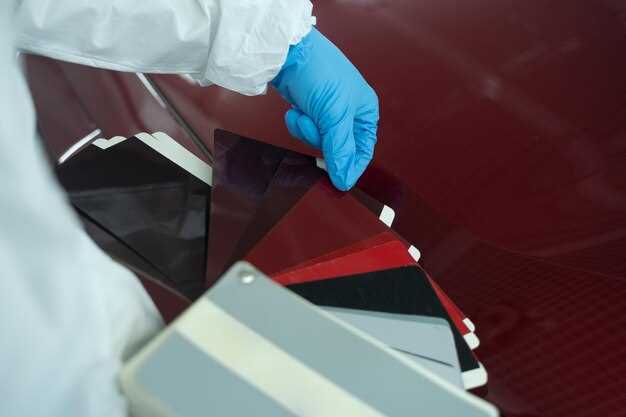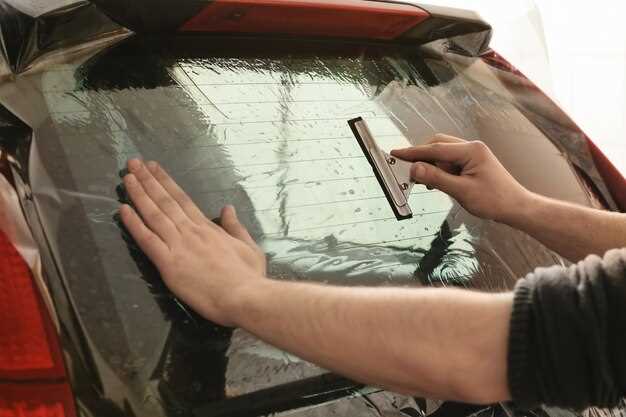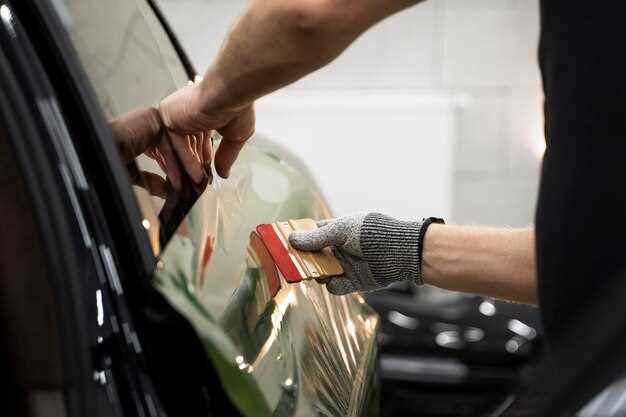
When it comes to preserving the aesthetic appeal of your vehicle, paint protection film (PPF) serves as an essential guard against the everyday challenges that come with driving. From gravel roads to harsh weather conditions, your car’s exterior is constantly exposed to elements that can cause scratches, chips, and fading. PPF is engineered to act as a protective shield, ensuring that your vehicle remains pristine for years to come.
This innovative film is composed of a durable, transparent polymer that adheres to the surface of your car’s paint. It acts as a barrier, absorbing the impact from debris and UV rays while allowing the underlying color and finish to shine through. Unlike traditional paint jobs, PPF offers a level of protection that can be self-healing, meaning minor scratches may disappear with the application of heat, keeping your vehicle looking as good as new.
Understanding how paint protection film functions is crucial for any car owner who values both appearance and longevity. By investing in PPF, you not only guard your vehicle against physical damage but also enhance its resale value, making it a smart choice for those looking to maintain their car’s beauty over time.
Principles of Paint Protection Film Composition and Benefits

Paint protection film (PPF) is engineered from a unique polymer composition that provides exceptional durability and resilience. Typically made from thermoplastic urethane, this film is designed to act as a strong guard against external elements that can potentially harm a vehicle’s paintwork. The molecular structure of these polymers allows for a flexible yet tough barrier, effectively preventing scratches and chips that occur from road debris and environmental factors.
One of the key advantages of paint protection film is its self-healing properties. When exposed to heat, minor abrasions and scratches can disappear as the film’s surface returns to its original state. This phenomenon enhances the film’s lifespan while maintaining a pristine appearance over time. Additionally, PPF is resistant to yellowing, ensuring that the vehicle retains its aesthetic appeal without age-related degradation.
Another significant benefit of paint protection film is its ability to protect against UV rays. Prolonged exposure to sunlight can lead to paint fading and deterioration. PPF acts as a shield, significantly reducing the chances of UV damage and preserving the vehicle’s color and gloss. Furthermore, the film is hydrophobic, meaning it repels water and contaminants, making cleaning easier and less frequent, while reducing potential damage from acidic substances like bird droppings or tree sap.
In summary, understanding the composition and benefits of paint protection film reveals its critical role in vehicle maintenance. By providing an effective guard against scratches and environmental damage, PPF serves not only to enhance the vehicle’s aesthetics but also to extend its lifespan and value.
Installation Techniques for Optimal Performance of PPF

To ensure that your paint protection film (PPF) functions effectively as a guard for your vehicle’s surface, proper installation techniques are crucial. Here are some key methods to achieve optimal performance.
Surface Preparation is a fundamental step. Before applying PPF, thoroughly wash and decontaminate the surface of the vehicle. Utilize clay bars to remove any embedded contaminants, ensuring a smooth substrate for the film. A clean surface allows for better adhesion and minimizes the risk of bubbles or imperfections.
Temperature Control during the installation process greatly influences the film’s effectiveness. Ideal conditions are typically between 60°F to 80°F (15°C to 27°C). If the temperature is too low, the adhesive may not activate properly; if too high, it could cause the film to stretch excessively. Use a heat gun or a heat wrap to adjust temperatures as needed.
Correct Positioning is essential for a seamless application. Begin by carefully aligning the film with the vehicle’s contours. Use masking tape to hold the film in place temporarily, allowing for adjustments before fully adhering it to the surface. This method helps prevent misalignment and ensures a precise fit.
During the installation, Pressure Application is vital for bonding. Use a squeegee to firmly press the film onto the surface, working from the center outward to eliminate air bubbles and wrinkles. This technique enhances the film’s adhesion and protects against potential lifting over time.
Finally, it is important to allow for proper Curing Time after installation. Avoid washing the vehicle or exposing it to harsh conditions for at least 72 hours. This period allows the adhesive to fully bond to the surface and guarantees the longevity and durability of the PPF.
By following these installation techniques, you can maximize the protective qualities of PPF, effectively guarding your vehicle against environmental damage and maintaining its aesthetic appeal.
Maintenance Tips to Maximize Longevity of Scratch Guards
To ensure that your scratch guards remain effective and provide optimal protection for your vehicle, regular maintenance is crucial. Here are some essential tips to help maximize the longevity of your paint protection film.
1. Regular Cleaning: Keep your scratch guards clean to prevent dirt and grime buildup. Use a gentle cleanser and a soft microfiber cloth to wipe down the surfaces. Avoid using harsh chemicals or abrasive materials that could damage the film.
2. Avoid Automatic Car Washes: While convenient, automatic car washes can be abrasive and may cause scratches on the surface of the scratch guards. Opt for hand washing to control the pressure and avoid unnecessary wear.
3. Immediate Attention to Scratches: If you notice any scratches on the guard, address them promptly. Applying a specialized scratch repair solution can help minimize the appearance and prevent further damage.
4. Waxing: Consider applying a high-quality wax to your scratch guards every few months. This creates an additional layer of protection and enhances the shine, helping to keep the film in excellent condition.
5. Parking Considerations: Whenever possible, park your vehicle in shaded or covered areas to minimize UV exposure, which can degrade the film over time. Avoid parking close to trees where sap or bird droppings can accumulate on the surface.
6. Regular Inspections: Periodically inspect your scratch guards for any signs of wear or damage. Catching issues early can save you time and money on repairs or replacements later on.
7. Professional Maintenance: Schedule professional cleaning and inspection services at least once a year. Experts can identify issues that may not be visible to the untrained eye and provide necessary treatments to extend the life of your scratch guards.
By following these maintenance tips, you can significantly enhance the durability and performance of your scratch guards, ensuring that your vehicle maintains its appearance for years to come.






